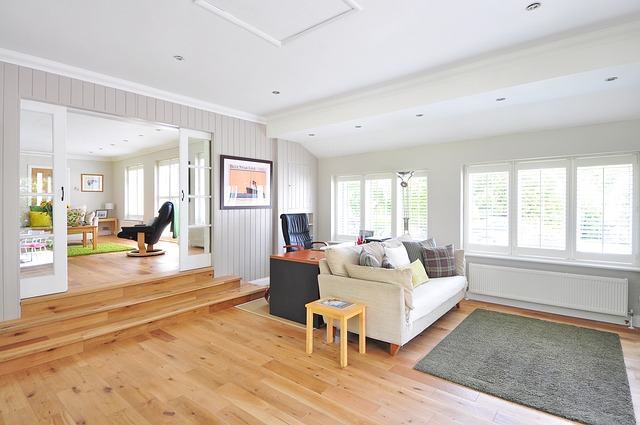Did you know that proper floor planning can increase retail sales by up to 30%? Understanding the essential do’s and don’ts of floor planning is crucial for businesses aiming to optimize their space effectively. In this guide, we will delve into the fundamental principles of floor planning 101, providing you with actionable insights to enhance your layout strategy. From maximizing traffic flow to avoiding common pitfalls, mastering these key concepts can elevate your business’s success and customer experience.
Understanding Floor Planning Basics
Floor Planning
Floor planning is the initial step in interior design, determining how a space will function and look. It involves arranging furniture and fixtures within a room to optimize the layout for both practicality and aesthetics.
Effective floor planning is crucial as it sets the foundation for a well-designed space. By strategically placing items like sofas, tables, and cabinets, you can maximize functionality and create a visually appealing environment.
Significance of Effective Planning
Implementing an efficient floor plan can significantly enhance the functionality and aesthetics of a room. For instance, placing a dining table near the kitchen area streamlines mealtime activities, making it easier to serve and enjoy meals.
Understanding spatial relationships is key to successful floor planning. By considering how different elements relate to one another in terms of size, shape, and proximity, you can create a cohesive design that flows seamlessly.
Pros:
- Optimizes space utilization
- Enhances visual appeal
- Improves traffic flow
Cons:
- Requires careful measurement and planning
- Can be time-consuming to rearrange furniture
Role of Spatial Relationships
Spatial relationships play a vital role in determining how well a room functions and feels. For example, ensuring there is enough clearance around furniture pieces prevents a cramped atmosphere and allows for easy movement within the space.
Essential Do’s in Floor Planning
Specific Goals
When designing a perfect floor plan, it is crucial to identify specific goals for each space. By doing so, you can ensure that every room serves its intended purpose effectively. For instance, the living room should be designed for socializing and relaxation, while the kitchen should prioritize functionality and efficiency.
Expert Advice
Incorporating expert advice from spatial designers can significantly enhance the quality of your floor plan. These professionals have the knowledge and experience to optimize space utilization, improve traffic flow, and create a harmonious design aesthetic. Their insights can help you avoid common pitfalls and achieve a well-balanced layout.
Value and Appeal
One of the key objectives of floor planning is to ensure that every design change contributes positively to the home’s value and appeal. Whether you are renovating an existing space or building a new home, each decision should enhance the overall attractiveness and functionality of the property. This includes selecting open floor plans that create a sense of spaciousness and flexibility, as well as choosing from many flooring choices to complement the design scheme.
Common Don’ts to Avoid
Neglecting Fixed Elements
When planning a floor layout, avoid neglecting fixed elements like structural columns or load-bearing walls. These elements can limit the design options available for the space. By acknowledging their presence early on, you can work around them effectively.
Underestimating Designers’ Expertise
Underestimating the knowledge and expertise of skilled designers can hinder achieving an optimal layout. Design professionals bring valuable insights and creativity to the table, ensuring that the space is not only functional but also aesthetically pleasing. Collaborating with them can lead to innovative solutions that maximize the potential of the area.
Overlooking Plan Reviews
Don’t overlook the importance of reviewing both before and after plans when engaging in floor planning. Before finalizing a layout, carefully assess all aspects to ensure they align with your goals and requirements. After implementation, reviewing the executed plan helps in identifying any discrepancies and making necessary adjustments for future projects.
Space Planning for Remodels
Assess Spaces
Assess existing spaces to identify opportunities for improvement during remodels. Consider the flow of each room and how they connect. Look for areas where space efficiency can be enhanced.
Prioritize functionality by considering daily use. Think about how each space will be utilized on a regular basis. Ensure that the layout and design cater to the practical needs of the occupants.
Innovative Solutions
Explore innovative solutions to maximize space efficiency while maintaining style. Consider unique storage options like built-in cabinets or multifunctional furniture. Experiment with different room layouts to find the most efficient arrangement.
- Built-in cabinets
- Multifunctional furniture
Pre-Design Considerations
Client Needs
Evaluate the client’s needs and preferences thoroughly to guide the design process effectively. Understanding their lifestyle, habits, and aesthetic preferences is crucial for creating a functional and personalized space. By considering these aspects, designers can tailor the floor plan to suit the client’s unique requirements.
Building Codes
Research local building codes and regulations early in the planning stages to ensure compliance throughout the project. Understanding these regulations helps avoid costly mistakes and delays during construction. It is essential to be aware of any restrictions or requirements that may impact the floor plan design.
Inspiration Gathering
Gather inspiration from various sources to spark creativity and innovation in your design approach. Exploring different styles, materials, and layouts can provide fresh ideas and perspectives for your project. By drawing inspiration from diverse sources, you can create a unique and engaging floor plan that meets both functional and aesthetic objectives.

Small Home Planning Tips
Multi-Functional Furniture
Small homes require basic space planning tips to make the most of limited square footage. One effective strategy is to utilize multi-functional furniture, such as sofa beds or storage ottomans. These pieces serve dual purposes, optimizing both comfort and functionality in a compact living space.
Vertical Storage Solutions
When it comes to home design, incorporating vertical storage solutions is crucial. Installing shelves or cabinets that reach up towards the ceiling maximizes storage capacity without taking up precious floor area. This approach helps declutter living spaces while keeping essential items within easy reach.
Open Floor Plans
Opting for open floor plans is a good solution for small home layouts. By removing unnecessary walls, you can create a more spacious feel and enhance the flow between rooms. This design choice fosters a sense of openness and connectivity throughout the entire living area.
Key Takeaways from Design
Collaboration Benefits
Collaborating with experienced designers throughout the process ensures a seamless integration of design work. Their expertise can elevate the project by offering insight and unique solutions to any working issues that may arise. This partnership leads to a more refined exploration of ideas and a clearer direction for achieving your goals.
Experienced designers bring a wealth of knowledge to the table, guiding you through the intricate process of creating a functional and aesthetically pleasing space. Their ability to identify potential gems in design concepts can transform a mundane space into something extraordinary. By working closely with a designer, you can tap into their skill set and benefit from their keen eye for detail.
Long-Term Impact
Well-executed floor plans have a profound impact on the overall value and livability of a home. Thoughtful planning not only enhances the visual appeal of a space but also improves its functionality. A carefully crafted floor plan can maximize natural light, create efficient traffic flow, and optimize spatial usage.
The lasting effects of a well-designed floor plan extend beyond aesthetics; they contribute to the overall comfort and usability of a home. A thoughtfully planned layout can make everyday tasks more convenient and enjoyable. Strategic placement of key elements such as windows can enhance natural ventilation and lighting, reducing the need for artificial sources.
Customization and Personalization
Collaborating with a designer allows for the incorporation of personalized touches that reflect your unique style and preferences. Customizing your space adds an extra layer of sophistication and character, making it truly one-of-a-kind. Designers can help you navigate through various options to find elements that are not only visually appealing but also functionally efficient.
Before and After Comparisons
Visual Examples
Visual examples of before and after floor plans provide a clear demonstration of the differences in layout and space utilization. By comparing the initial design with the final outcome, one can easily identify the changes made to enhance the overall functionality of the space. These comparisons highlight the improved flow and address problem areas that were rectified during the redesign process.
Space Usability Analysis
Analyzing the effectiveness of design modifications in enhancing space usability is crucial for creating a functional and aesthetically pleasing environment. By examining the times spent in each area, one can determine whether the adjustments have successfully addressed the challenges identified in the initial design phase. The improved flow resulting from these changes can significantly impact how individuals interact with and navigate through the space.
Lessons Learned
Comparing the before and after floor plans offers valuable insights into the solutions that worked well and those that fell short. It provides an opportunity to reflect on the decisions made during the design process and evaluate their impact on the final outcome. Understanding the possible outcomes of various design choices allows for continuous improvement and ensures that future projects are executed with greater ease and efficiency.
Floor Plan Review and Consultations
Regular Reviews
Encourage regular reviews of floor plans to ensure they align with project goals. This practice helps identify any discrepancies early on, preventing costly revisions later. By conducting frequent reviews, teams can stay on track and ensure that the floor plan design work meets all requirements.
Suggest incorporating redlining techniques when reviewing floor plans. This involves marking necessary adjustments clearly on the plans. Redlining helps streamline the communication process between team members, ensuring that everyone is aware of the changes needed. It also aids in maintaining accuracy throughout the floorplan planning phase.
Client Consultations
Advocate for consultations with clients during the floor plan design process. Gathering feedback directly from clients allows designers to tailor the floor plans to their preferences effectively. By involving clients in the decision-making process, designers can refine designs based on specific needs and desires.
Recommend integrating virtual floor plan reviews to enhance client consultations. Virtual reviews enable clients to visualize the floor plan sketches in a realistic manner, providing them with a better understanding of the final outcome. This interactive approach fosters collaboration and ensures that the final floor plan details meet the client’s expectations.
Conclusion
You’ve now grasped the essentials of floor planning, from do’s and don’ts to pre-design considerations. By understanding the significance of space planning and small home tips, you’re better equipped to create functional and aesthetically pleasing living spaces. Reflect on the key takeaways, review your floor plans, and consider consultations for expert insights. Before and after comparisons can inspire and guide your future projects.
Take action today by applying these insights to your next floor planning endeavor. Your improved understanding will lead to more efficient layouts and better use of space. Keep refining your skills, stay updated on design trends, and never underestimate the impact a well-thought-out floor plan can have on your daily life.
Design Your Perfect Floor Plan with Red White & Blue Construction!
Thinking about redesigning your floor plan? Your search ends here! Embark on an exciting journey to transform your Lafayette, CA home into the living space you’ve always dreamed of. With Red White & Blue Construction, every inch of your floor plan becomes a harmonious blend of beauty and functionality. Imagine innovative layouts that maximize your space’s potential, creating a natural flow that enhances both comfort and style. Whether you’re looking to optimize your current floor plan or dreaming up something entirely new, we’re here to bring your vision to life.
Our stellar reputation across the Bay Area speaks to our unwavering commitment to excellence, precision, and the highest standards of craftsmanship. We’re not just licensed contractors; we’re the creative minds behind your ideal living space. With transparent pricing and a client-first approach, you’re not just planning a floor—you’re laying the foundation for a whole new lifestyle. Choose Red White & Blue Construction and turn your home into a masterpiece. Design Your Perfect Floor Plan and connect with us today!
Disclaimer
The materials available on this website are for informational and entertainment purposes only and not to provide advice. You should obtain advice concerning any particular issue or problem from a professional. You should not act or refrain from acting based on any content included in this site without seeking legal or other professional advice. The information presented on this website may not reflect the most current building developments. No action should be taken in reliance on the information on this website. We disclaim all liability concerning actions taken or not taken based on any or all of the contents of this site to the fullest extent permitted by law.





